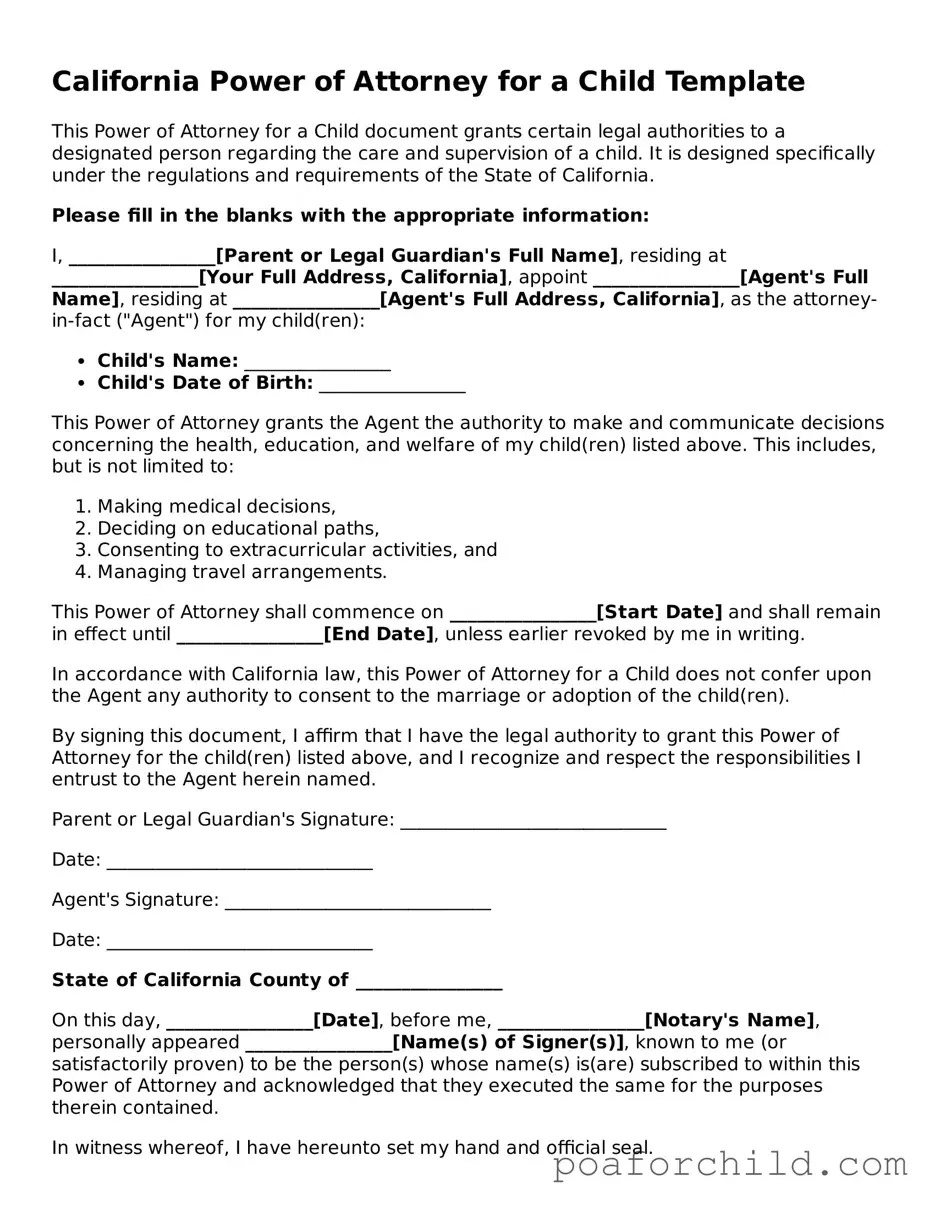Detailed Guide for Using California Power of Attorney for a Child
When life's unpredictable nature necessitates the presence of a reliable adult to care for a child in a parent or guardian’s absence, a Power of Attorney (POA) for a child becomes an invaluable tool. This document legally allows another person to make decisions and take actions concerning the child's welfare, education, and health. Though the task of filling out the California Power of Attorney for a child form may seem daunting, it's straightforward with the right guidance. The steps below will help you fill out the form accurately to ensure that your child receives the care and protection they deserve in your absence.
- Begin by gathering all necessary information, including the full legal names and addresses of the parent or current legal guardian, the appointee (the person who will be granted the Power of Attorney), and the child. You will also need the child's date of birth and social security number, if applicable.
- Locate the official California Power of Attorney for a Child form. This can usually be found on the website of the California Courts or the Department of Child Welfare. Ensure you are using the most current version of the form.
- Fill in the introductory section with the names of the parent(s) or current legal guardians, the child's name, and the name of the appointee. This formally identifies all the parties involved.
- Specify the powers being granted to the appointee. This section may include decisions related to the child’s education, health care, and general welfare. Be as detailed as necessary to provide clear guidance and authority to the appointee.
- Define the duration of the Power of Attorney. The document should clearly state when the POA begins and when it expires. Some POAs are effective immediately, whereas others may commence on a future date or upon the occurrence of a specific event.
- Include any special instructions or limitations regarding the powers granted. This section allows you to tailor the POA to fit your child's specific needs and circumstances, offering peace of mind that the appointee’s authority is clearly defined.
- Both the appointing parent(s) or guardian(s) and the appointee must sign and date the form. Depending on your location within California, you might also need to have the form notarized to ensure its legality. Be sure to check the requirements specific to your county.
- Keep a copy of the signed document for your records, and provide a copy to the appointee. It’s also advisable to inform close family members and the child’s healthcare providers or educators of the arrangement.
Filling out the California Power of Attorney for a Child form is a significant step in safeguarding your child’s well-being during your absence. By following these steps, you can ensure the form is completed effectively, granting peace of mind to you, your child, and the appointed guardian. Remember, the well-being of the child is the priority, and this document is a provision for their care and protection.
